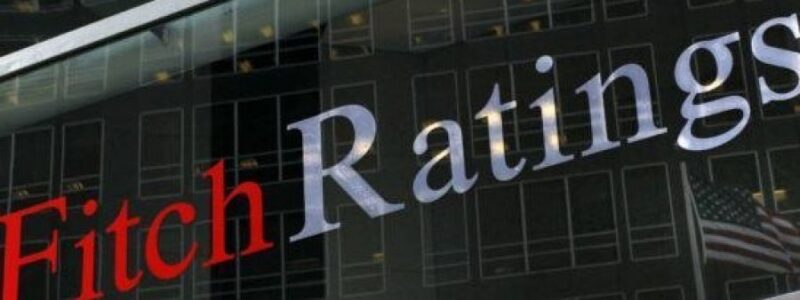
International rating agency Fitch Ratings has affirmed Ukraine’s Long-term foreign currency Issuer Default Rating (IDR) at “CC”, the agency said in a statement on its website.
“The affirmation of Ukraine’s ‘CC’ long-term foreign currency IDR reflects Fitch’s view on the likely further restructuring of its commercial debt in foreign currency, given the scale of economic damage from the war with Russia and the significant financial damage associated with it,” the agency explains its decision.
Fitch believes that burden sharing with commercial creditors is a likely condition for large financial assistance provided by international official creditors.
The agency notes that a 24-month grace period on Ukraine’s Eurobonds, reached in August 2022, provided relief on servicing Ukraine’s $6 bln external debt, but leaves unresolved medium-term debt sustainability risks. It estimates that sovereign foreign debt service will rise to a relatively high level of $5.4 billion in 2024 (excluding $3.5 billion of deferred interest payments on Eurobonds that can be capitalized) and $7.0 billion in 2025, laying the groundwork for a possible new restructuring.
Fitch forecasts Ukrainian GDP growth of 2% in 2023, as the ongoing war prevents the return of significant numbers of refugees or large-scale investment, and power outages following Russian shelling create an additional constraint. The agency recalls a GDP decline of about 31 percent in 2022 and a net outflow of 8 million people, according to the UN, while pointing to a possible overstatement.
The agency predicts that inflation will fall to 21% in 2023 from 26.6% in 2022 as lost production capacity, power shortages, and only gradual elimination of supply chain disruptions offset weak domestic demand.
Fitch expects the war to continue in 2023 within its current broad parameters, as there are no politically credible concessions in the near future that could form the basis of a negotiated settlement. The agency believes that President Putin’s goal remains to undermine the sovereign integrity of the Ukrainian state, while Ukraine’s successful counterattacks in Kherson and Kharkiv make it even less likely that it will cede its territory to Russia.
According to Fitch, although the strategic advantage has shifted more in favor of Ukraine in recent months, neither side appears to have a decisive military advantage to achieve the objectives that could lead to a protracted conflict. “Over a longer period, the prospect of a negotiated settlement becomes more likely as the costs to both sides increase, although this may well take the form of a ‘frozen conflict’ rather than a sustainable peace,” Fitch admits.
Fitch forecasts the deficit to shrink to 15.2% of GDP in 2023 from 20.1% of GDP in 2022 because of the partial implementation of budgeted cuts in real terms to social spending and slightly higher grants, but defense spending remains well above the government’s target. “We expect high deficits in the medium term due to reconstruction needs, increased social spending, including on war veterans, and increased prewar defense spending,” the agency adds.
Fitch also estimates a 37 percentage point (pp) increase in total government debt to GDP in 2022 to 80.2% (excluding government guarantees of 7.5% of GDP) and forecasts it will rise to 84.0% by the end of 2023. It adds that the share of government debt in foreign currency has risen to 66%, which has increased currency risks, although the share of long-term concessional debt has also increased.
The agency expects the goal of raising $38bn in external budget funding in 2023 to be fully achieved, and the local currency public domestic debt rollover ratio, which fell to 65% in 2022, will partially recover this year thanks to recent changes in reserve requirements, further growth in government bond yields and the current record high level of bank liquidity, which will reduce the National Bank financing of the state budget deficit.
“Little is currently known about sources of funding beyond this year’s end due to risks associated with potential donor fatigue, increased stress in the banking sector weakening demand for domestic debt, and restrictions on the use of NBU fiscal funding if inflation remains high and external financing pressures resume,” Fitch notes/
It adds that the size of capital outflows from the private sector remains relatively stable, restrained by capital controls, and international reserves stood at $28.5bn at the end of 2022, up from $27.6bn at the end of February. Fitch forecasts that the current account surplus will shrink to 2.6% of GDP this year amid higher import growth, and international reserves will be 3.8 months of current external receipts at the end of 2023, down from 4.0 months at the end of 2022.
The local currency IDRs are affirmed at “CCC-“: the lower default risk than for foreign currency debt reflects a greater barrier to including local currency debt in any further debt restructuring, given that non-residents hold only 5%, while 55% is held by the NBU and another 32% by the domestic banking sector (half owned by the state), for which financial stability risks may be associated.
“We also do not expect strong international pressure to restructure domestic debt, partly because of additional concerns that this could undermine efforts to revive demand for new government debt issuance,” Fitch said.